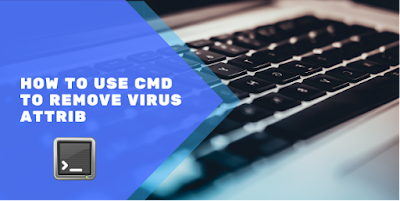How to use CMD to Remove Virus Attrib

How to use CMD to remove virus from USB drive, SD card, flash drive or any disk in Windows 10? Follow this guide, all command lines are covered, it's worth trying to remove the virus from your computer. On this page, we have provided four practical methods to help you remove viruses and help you recover deleted files using powerful file recovery software. If you find yourself in this dilemma, follow the solutions given here to clean the viruses and restore your files: • Solution 1. Remove the virus with CMD • Solution 2. Run antivirus software • Solution 3. Run Windows Defender • Solution 4. Format the infected device • Other tips. restore files What damage can viruses cause? We absolutely hate computer viruses. But do you know exactly how viruses can harm your computer? Simply put, a computer virus is simply a type of program that causes your computer to behave in an unwanted way. It could be a dangerous infiltration designed to crash your computer, delete important...